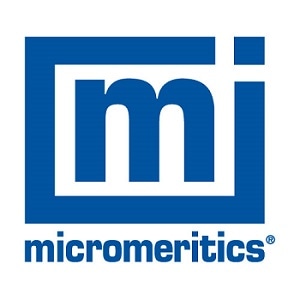Particle size analysis (Figure 1) is the preferred method for characterizing raw materials used in pharmaceuticals, setting specifications for incoming raw material in order to determine appropriate excipients for a formulation and address issues associated with product performance such as dissolution. However, there are other measurements such as specific surface area measurement need to be performed for the complete characterization of Active Pharmaceutical Ingredients (API) and excipient materials.
.jpg)
Figure 1. Particle size analysis is traditionally used for raw material characterization.
Surface Area
Fully characterizing the raw materials is helpful to set specifications for them to define their behavior in a specific process or product. Although, the specifications provided by suppliers may be sufficient in certain cases, there may be difference in the behavior of materials provided by the same supplier but produced at different ends. While the supplier’s specification has been met in both cases, it may lead to unwanted process or performance deviation in an operation.
Hence, surface area measurement (Figure 2) can be incorporated as a quality control tool to the series of incoming raw materials analyses to determine the consistency of materials in terms of the parameters that are crucial for the performance of a product or process. Particle size reduction due to the use of various grades of the same material or different processing steps can modify the surface area of a material, which increases with decreasing particle size. This increment may cause homogeneity problems.
.jpg)
Figure 2. Surface area measurements are crucial for pharmaceutical materials.
There is a change in interactions between particles due to the increased surface area and the subsequent increment in surface energy, leading to destabilization of the blend. This, in turn, results in ineffective blending, segregation, or demixing, which are the key reasons of blend and content homogeneity failures.
Significance of Surface Area
Material characterization is significant to gain insights into the pharmaceutical system being developed. Understanding the effect of key functional ingredients and their properties on a product during the production process is crucial to determine the efficacy of the dosage form once administered. Surface area in combination with attributes like salt selection of an API influences the solubility of the product. The degree of tablet swelling taking place can be determined from the surface area of a superdisintegrant.
The functionality of a lubricant varies with its surface area, causing dissolution problems. Having this data from the onset of the pharmaceutical development process can avoid downstream problems such as potential process re-designs, product rejection, and re-work of poor performing product. The surface area of key ingredients in a formulation may be measured as a Critical Quality Attribute (CQA) when carrying out Risk Assessment according to the guidance of ICH Q9, thus becoming a key component of overall quality control strategy.
The dissolution rate of an API is affected by its surface area. Hence, it is essential to have accurate surface area measurements. The increase in the surface area allows exposure of more surfaces to the dissolution medium. Hence, a material having higher surface area will be dissolved rapidly and its availability for absorption is at a rate that may cause negative pharmacodynamic implications. Ultimately, the product is rejected or recalled over safety concerns.
Surface Area Measurement
The surface area measurement of solid samples involves pretreatment of the samples to eliminate contaminants (water and CO2) adsorbed from the atmosphere by applying vacuum, heat and a gas flow. This is followed by cooling of the solid to cryogenic temperature of -195°C under vacuum and controlled addition of an adsorptive to the solid. The pressure is allowed to reach equilibrium after every dose of adsorptive and the adsorbed quantity is subsequently estimated.
The adsorbed quantity at each temperature and pressure provides an adsorption isotherm, which is used to determine the amount of gas needed to create a monolayer on the outer surface of the solid. It is possible to determine the surface area from the area of the monolayer created by these adsorbed gas molecules (Figure 3). This technique follows the procedure described in the current USP <846> methodology to measure specific surface area.
.jpg)
Figure 3. Surface area measurement
Conclusion
Both processes and materials need to be evaluated to identify the root cause of problems such as failing disintegration times, failing blend or content homogeneity, or unwanted changes in dissolution profiles. Surface area analysis of a material is a key tool to gain key insights from the beginning of a development process, allowing manufacturers to create robust processes and products to meet regulatory requirements and ensure the identification and control of critical parameters.

This information has been sourced, reviewed and adapted from materials provided by Micromeritics Instrument Corporation.
For more information on this source, please visit Micromeritics Instrument Corporation.